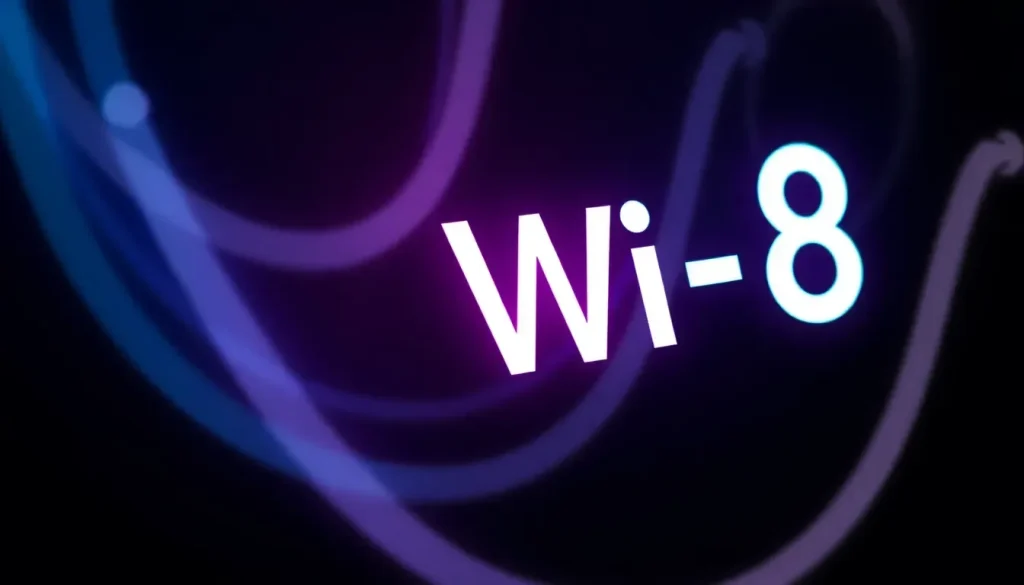What is Wi-Fi 8 and when will it be available for devices

As technology evolves, so does our need for faster, more reliable internet connections. The upcoming Wi-Fi 8 promises to deliver enhanced connectivity that meets the demands of modern users. With increasing numbers of devices requiring internet access, understanding what Wi-Fi 8 brings to the table is essential for anyone looking to upgrade their home or business network.
In the realm of wireless technology, the Wi-Fi Alliance stands as the guardian of standards and advancements. Recently, Qualcomm has taken the lead in introducing Wi-Fi 8, a significant upgrade over its predecessors. According to Rolf De Vegt, Qualcomm's Vice President of Technical Standards, this new version aims to revolutionize our wireless experience with notable enhancements and innovations.
Understanding Wi-Fi 8: A New Era in Connectivity
Wi-Fi 8, officially designated as 802.11bn by the Institute of Electrical and Electronics Engineers (IEEE), represents the next leap in wireless technology. While it might be easier to remember the catchy name Wi-Fi 8 than its technical designation, this new standard aims to bring substantial improvements over existing technologies.
The journey of Wi-Fi technology began with Wi-Fi 4 in 2009, followed by Wi-Fi 5 in 2013, Wi-Fi 6 in 2021, and Wi-Fi 7 expected in 2024. Each iteration has brought significant improvements in speed and efficiency, but Wi-Fi 8 is set to take those advancements to a new level, with anticipated speeds reaching up to 100 Gbps, compared to Wi-Fi 7's 23 Gbps.
Key Innovations and Features of Wi-Fi 8
What makes Wi-Fi 8 stand out? Beyond its impressive speed, it introduces several features designed to enhance user experience and meet the demands of various environments:
- Ultra High Reliability (UHR): Wi-Fi 8 aims to offer a robust connection, especially in challenging environments.
- Significantly Higher Speeds: Expect at least a 25% increase in speed under challenging signal conditions compared to Wi-Fi 7.
- Reduced Latency: A focus on achieving a 25% lower latency, particularly in high-demand scenarios.
- Minimized Packet Loss: A goal to achieve 25% less packet loss during roaming, improving overall connectivity.
- Energy Efficiency: Enhanced energy consumption features that are crucial for battery-operated devices.
Additionally, Wi-Fi 8 is expected to maintain the tri-band frequency structure of Wi-Fi 7, operating on 2.4 GHz, 5 GHz, and 6 GHz. This versatility will allow for greater flexibility and effectiveness in various environments.
Five Pillars of Wi-Fi 8 Technology
Rolf De Vegt outlines five critical areas that Wi-Fi 8 will address to enhance connectivity:
- Seamless Roaming: The introduction of Single Mobility Domains allows users to maintain connectivity without interruptions while moving between access points.
- Reliable Edge Coverage: This feature ensures consistent connectivity even in areas with weak signals, which is particularly important for industrial settings.
- Intelligent Coordination for Dense Environments: Improved cooperation among access points in crowded areas enhances performance in high-density locations.
- Improved Device Coexistence: Wi-Fi 8 aims to allow various wireless technologies, such as Bluetooth and ultra-wideband (UWB), to function together without interference.
- Enhanced Energy Use: Innovation in energy efficiency is critical, focusing on devices that consume less power while delivering high performance.
Challenges Faced by Wi-Fi 8
The rollout of Wi-Fi 8 comes with its own set of challenges. As wireless technology becomes increasingly ubiquitous, the risk of congestion in the radio frequency spectrum looms large. Developers must find ways to facilitate higher data transfer rates without overwhelming the existing infrastructure.
Moreover, competing technologies such as 5G pose a significant challenge. The rapid advancement of mobile connectivity means that Wi-Fi must adapt and prove its reliability in various environments, including congested urban areas and mobile contexts. The focus on Ultra High Reliability reflects the need to deliver exceptional performance even under adverse conditions, ensuring that Wi-Fi can coexist and compete with other technologies.
The Roadmap for Wi-Fi 8: Timeline and Expectations
The development of Wi-Fi 8 officially began in July 2022, with the formation of the UHR study group. As of September 2023, the authorization request for the project was made public, marking a significant step forward. The anticipated timeline is as follows:
- September 2024: Publication of the first draft (version 0.1).
- 2025: Expected release of draft 1.0.
- January 2028: The Wi-Fi Alliance is expected to grant formal certification.
- March 2028: Final approval from the project team.
- Afterward, manufacturers can begin producing and distributing Wi-Fi 8 compatible devices, likely throughout 2028 and into the following year.
Given this timeline, it’s clear that while Wi-Fi 8 promises to be a game-changer, it is still several years away from being widely available. Users and manufacturers alike should prepare for the transition, understanding what improvements and capabilities this new standard will bring.
For visual learners, an insightful overview of the latest advancements in Wi-Fi technology can be found in this video:
As we await the arrival of Wi-Fi 8, understanding its features, benefits, and the challenges it faces will help consumers and businesses make informed decisions about their connectivity needs in the future.




Leave a Reply